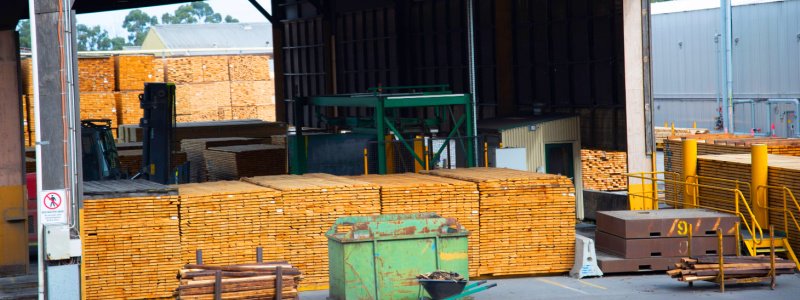After public consultation and senate amendments and crossbench support, the enabling legislation for the $15 billion National Reconstruction Fund (NRF) will now be established in law.
What are the focus and motivating factors for the NRF?
“Serious countries should make things” was a sentiment expressed by the current prime minister when spruiking the NRF and the plan for A Future Made in Australia prior to the 2022 election. For some background context, consider the following information about the status of Australian manufacturing. Australia’s last car manufacturing plant (Holden’s plant in South Australia) closed in October 2017, and the COVID-19 pandemic highlighted significant shortcomings in the Australian manufacturing industry’s ability to cope with the demands that arose in critical supply lines, thus exposing potential sovereign risk from overreliance on overseas manufacturing. Recent OECD data showed that Australia ranked last among developed nations in producing the goods it consumes. Most developed nations produce an excess of the manufactured goods they consume, but Australia only produces about two-thirds of what it consumes — a profile not typical of a rich, developed nation. Manufacturing as a percentage of Australia’s GDP fell from almost 30% in the 1950s and 60s to just under 6% in 2019.
$15 Billion National Reconstruction Fund: Summary of key points
- The $15 billion allocated to the NRF will be used to support, diversify, and transform Australia’s industry and economy to help create secure, well-paid jobs, secure future prosperity, and drive sustainable economic growth. It will be directed to value-add projects that broaden the nation’s manufacturing capability and build on or use resources already mined or created here.
- It will target 7 Priority areas (see further below for more details on these).
- The NRF is a key initiative of the Government’s “Future Made in Australia” agenda (as shown by the Government already announcing target investment levels of $1.5 billion for medical manufacturing and $1 billion for advanced manufacturing within the context of the 7 Priority areas).
- It is a co-investment scheme (government joining with private investors) modelled on the successful Clean Energy Finance Corporation (CEFC), which will offer finance in the form of loans, guarantees, and equity.
- The bill establishes the NRF Corporation as a new Corporate Commonwealth Entity, with an independent board that makes investment decisions and manages the NRF’s investment portfolio to achieve both the NRF’s objectives and a positive portfolio rate of return.
- $5 billion will be made available from commencement of the NRF Corporation (i.e., in 2023), with the remaining $10 billion to be made available by 2 July 2029.
- Revenue generated through the fund’s investments will be reinvested to support new projects.
- The NRF’s focus is on transformation and diversification; it is not intended to make investments in projects that support business as usual or low value-add activities.
Some of the more important amendments made to the original bill before it passed the Senate include:
- Insertion of six other considerations that the Board must have regard to in performing its functions, in particular:
- Australia’s greenhouse gas emissions reduction targets and the desirability of supporting decarbonisation, in order to explicitly rule out using the fund to invest in coal, gas and native forest logging.
- the desirability of encouraging the commercialisation of Australian innovation and technology.
- Changes to details about the independent board that will administer the NRF’s funds, including size of the board and the experience and length of terms for board members.
What are the NRF’s 7 Priority areas?
The NRF will diversify and transform Australia’s industry and economy through targeted investments in the following 7 priority areas:
- Renewables and low emissions technologies
- Medical science
- Transport
- Value-add in the agriculture, forestry and fisheries sectors
- Value-add in resources
- Defence capability
- Enabling capabilities (e.g., data science, artificial intelligence, robotics, and quantum computing).
The Government has already announced target investment levels for specific priority areas:
- Up to $3 billion for renewables and low emissions technologies.
- $1.5 billion for medical manufacturing.
- $1 billion for value-adding in resources.
- $1 billion for critical technologies.
- $1 billion for advanced manufacturing.
- $500 million for value-adding in:
- agriculture
- forestry
- fisheries
- food
- fibre
As you can see, there’s a crossover between the priority areas; for example, if you’re manufacturing something associated with renewables and low emissions technologies, you could potentially already have access to a $5 billion pool of funding ($3 billion for Renewables and low emissions technologies + $1 billion for Critical technologies + $1 billion for Advanced manufacturing) from the total of $8 billion already earmarked, which could assist your company’s projects in the form of loans, guarantees, or equity investment.
Keep an eye out for Fullstack Advisory’s articles and newsletters so you can leverage our knowledge and expertise and ensure you obtain all the grants, incentives, and special financing you’re entitled to.
Was this article helpful?
Related Posts
- Blockchain Startup Funding: New Sources of Funds
The ICO model is not as effective as it once was — but that hasn’t…
- Blockchain Startup Funding: What to Do in 2021
The ICO model is not as effective as it once was — but that hasn’t…
- Business Growth Fund
SMEs with Annual Revenue Above $2 Million Can Now Scale Up by Accessing the $540…
- MVP Grant: Matched Startup Funding to $25,000
Jobs for New South Wales supports hundreds of new NSW-based startups with the MVP Grant.…
- Pharmaceutical R&D: Tax and Funding Incentives
Pharmaceutical R&D is known to be highly intensive and a long-term process, so it is…
- Setting up a Private Ancillary Fund
Private Ancillary funds are charitable trusts that can be beneficial for long-term planning. Learn about…
- Startup Funding in Australia: A Fullstack Guide
Finding funding for your startup can be a time-consuming, difficult process. Here’s what you need…
- The Self-Funded Startup: Make the Right Choices for Success
Some of the most impressive startups are self-funded — but launching your self-funded startup without…
- 5 Biggest Questions on Australia’s R&D Tax Incentive
Considering applying for the R&D Tax Incentive? We cover off on the 5 biggest questions…
- Accelerating Commercialisation – co-fund your venture up to $1 million
Enterprising startups with a prototype available can progress faster with an Accelerating Commericalisation Grant.
- Business Growth Fund
SMEs with Annual Revenue Above $2 Million Can Now Scale Up by Accessing the $540…
- Setting up a Private Ancillary Fund
Private Ancillary funds are charitable trusts that can be beneficial for long-term planning. Learn about…















